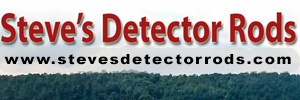Cybercore, the concept of treasure auras is a farce. Pretend. Make-believe. Tain't try real. That said, if you want to join in the game, then you probably should get the recommended equipment.
David Villanueva (DV) recommends a Canon EOS 350D. If you get anything else and fail, this will be pointed out as the cause. Next, get an IR (pass) filter and attach to the lens; DV recommends a 720nm Cokin (square frame, probably A-style). Because the camera has a built-in IR blocking filter, at this point the two filters are blocking almost all the light to the sensor, across the entire spectrum. The resulting images will be extremely dark; pass them through gamma-correction software and, voila!, you have auras.
The "auras" you get are actually the result of luminance noise caused by too little light getting to the sensor. You can eliminate them by taking long exposure times, but that also eliminates the fun, which is why DV never recommends it. As I mentioned in a previous post, luminance noise is just as likely to show up photographing dog turds as buried treasure.
If you want to truly experiment with IR, then here's an alternative:
1. Get a camera with a CCD sensor. The Canon uses a CMOS sensor, and CCD has better low-light and IR sensitivity. My personal choice is a Minolta 7D, but they are almost collector items now. A possible good (and cheap) choice is a Sony Alpha A100, the follow-on after Sony bought Minolta. Should work just as well but I've never tried it.
2. Remove the internal IR filter. DV says Don't Do This, but if auras are really in the infrared region like he claims then it makes no sense to intentionally kill the IR light coming in, except for the fact that it produces luminance noise and people can pretend they are auras. There is plenty of info on the web as to how to remove the filter. You could replace it with an IR-pass filter (lots of IR photographers do this), but I recommend a glass spacer, and doing all the filtering at the front of the lens.
3. Get a variety of IR pass filters for the lens. Play around with the normal camera settings, and you will get some stunning IR photographs. Cut way back on the exposure time, or maybe throw in an IR blocking filter, and you can get a really dark image that can be post-processed to reveal either an aura or luminance noise. Depending on whether you were photographing buried gold or a dog turd.
While treasure auras are a bunch of made-up nonsense, IR photography is itself fascinating. And people have used IR imaging to look at ground density variations, to locate old roads, foundations, and the like. That is to say, IR is not useless in treasure hunting, but pretending it produces treasure auras is.



 So you would agree the anecdotal evidence (last week's pix of Elvis walking down the Las Vegas strip) is not sufficient to prove Elvis is alive. You would want further proof. Eg.: Bringing Elvis to court, in this case.
So you would agree the anecdotal evidence (last week's pix of Elvis walking down the Las Vegas strip) is not sufficient to prove Elvis is alive. You would want further proof. Eg.: Bringing Elvis to court, in this case.
